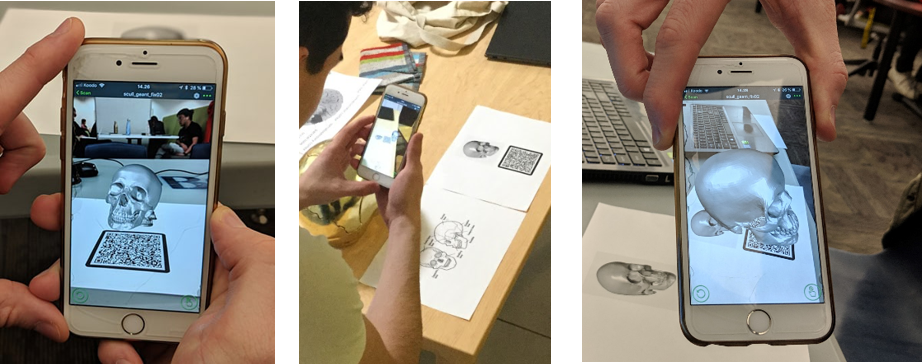A comparison of physical- and 3D models’ advantages and limitations
AR Visualization

AR Visualization

Collected participants' demographic information
Study 1: Users were tasked with identifying features on two physical models:
Study 2: Users were tasked with identifying the same features on 3D AR models of the same two objects
Interviews were conducted in person
Duration: 40-60 minutes
Quantitative Analysis: MS-Excel
Qualitative Analysis: Thematic Analysis (NViVo)

The app design is as follows:
The 3D models were implemented on Unity 3D integrated with Vuforia , which is a cloud based software used to store and organize the 3D models.For the simple objects users slightly preferred physical models.
For complex objects users heavily preferred using 3D models.
